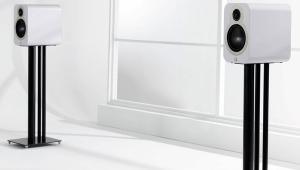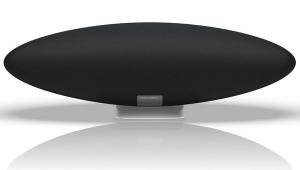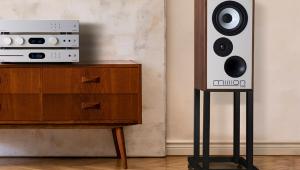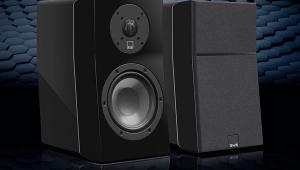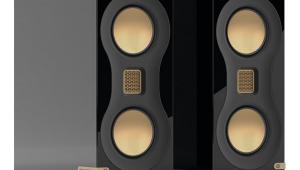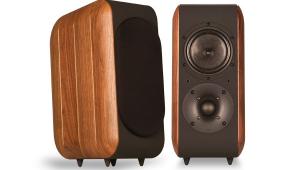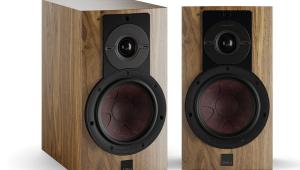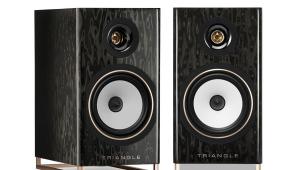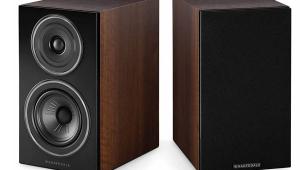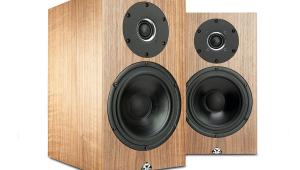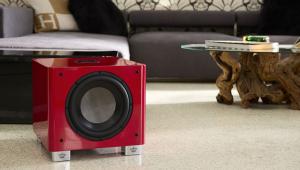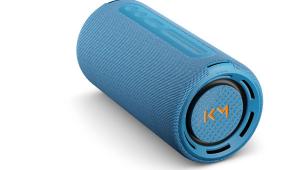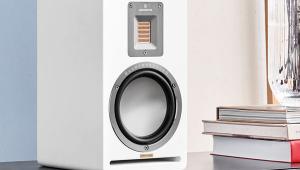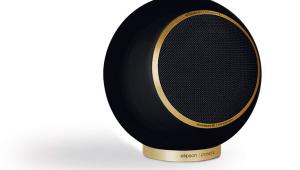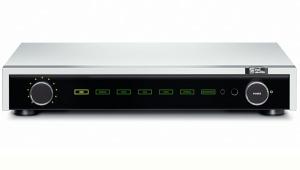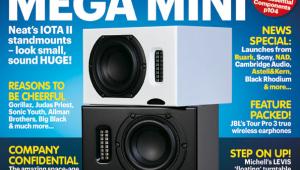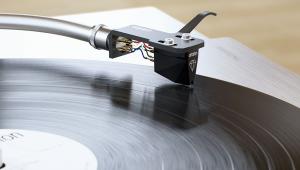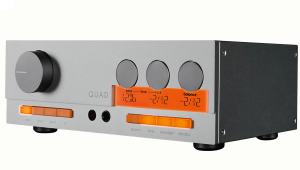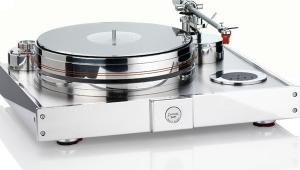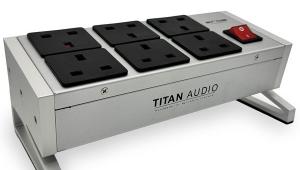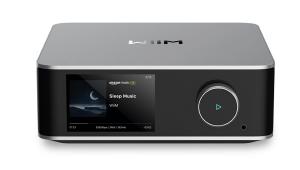Fyne Audio F1-8
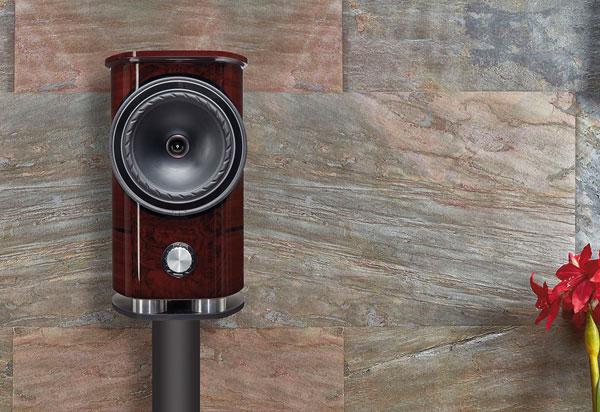
 You might well wonder why the F1-8 speaker exists. There is, after all, the £3,000 F1-5 which represents such a natural sweet spot for Fyne’s best-game standmount, it would be easy to accuse the technically identical but considerably larger and bulkier F1-8 of gratuitous overkill, especially if you’d just bear-hugged its 15.2kg barrel-shaped form onto its almost equally weighty FS8 stand. There are chunky standmounts that wing it – say, JBL’s L82 Classic or Q Acoustics’ freakishly deep 3030i (HFC 472)– but this is a giant, look-at-me statement and the most imposing, daylight-obscuring, aesthetically challenging standmount I’ve ever had in my listening room.
You might well wonder why the F1-8 speaker exists. There is, after all, the £3,000 F1-5 which represents such a natural sweet spot for Fyne’s best-game standmount, it would be easy to accuse the technically identical but considerably larger and bulkier F1-8 of gratuitous overkill, especially if you’d just bear-hugged its 15.2kg barrel-shaped form onto its almost equally weighty FS8 stand. There are chunky standmounts that wing it – say, JBL’s L82 Classic or Q Acoustics’ freakishly deep 3030i (HFC 472)– but this is a giant, look-at-me statement and the most imposing, daylight-obscuring, aesthetically challenging standmount I’ve ever had in my listening room.
After some precursory chin rubbing, I grow to like its unique shades of monocular Minion look and feel more comfortable with its conspicuous presence – perhaps the better to admire the fabulous standard of build and the only finish on offer, a gorgeous mélange of walnut, burr walnut and leather. The visible and tactile luxury stands comparison with high-end rivals costing multiples of its £6,000 price tag.
Of course, Fyne Audio had already revealed the technical content of its top drawer with its F1-10 and F1-12 floorstanding flagships, the latter costing a properly grown-up £28,000. The good news is that the F1 message is the same across the range. For Fyne the line incorporates the best versions of its patented tech, including IsoFlare point source drivers, twin cavity reflex loading and BassTrax Tractrix profile LF diffuser system, heavyweight machined aluminium plinth and an extensively braced, high-density pressed birch plywood cabinet.
A 25mm magnesium dome compression tweeter sits in the throat of a 200mm multi-fibre mid/bass driver. This arrangement forms the coaxial IsoFlare unit. The driver’s moving parts are built around a rigid cast aluminium chassis, which is good for damping out unwanted vibration and resonance, while the vented rear chamber in the centrally mounted tweeter’s Neodymium magnet is said to place low-frequency resonance well below the crossover region. Addressing potential distortion higher up the frequency range is the tweeter’s rigid magnesium dome, which is claimed to push the initial break-up mode well beyond audibility.
As well as looking neat, sonic advantages include much more precise time alignment between the drivers and more even dispersion, widening the listening sweet spot without squandering stereo focus and precision. Energy is radiated ‘isotropically’ with constant directivity, consistent with the flared surface of the main driver’s multi-fibre cone. The targeted ideal outcome is that sound is produced as if emanating from a single point in space.
As with the Fyne F502SP floorstander (HFC 472), the main driver’s distinctively contoured ‘FyneFlute’ rubber surround aims to nullify unwanted mechanical energy in the cone, leading to a more cleanly detailed delivery.
The F1-8’s curved cabinet is an exceptional thing. Made from a composite of hardwoods and dressed in a classy walnut veneer with a burr walnut inlay running from front to top, a deep and incredibly smooth high-gloss varnish seals the deal. The fillet of soft leather garlanding the driver is an extra feel-good touch. At the base, the substantial machined aluminium sandwich plinth houses Fyne’s BassTrax system, which comprises a downward-firing port and cone-shaped Tractrix diffuser – the aim being full 360° dispersion of the wavefront for better room integration and more flexible placement. Round the back, the bi-wire speaker panel features a fifth terminal to ground the driver chassis and reduce the influence of RF interference in the circuit. The knob just below the driver on the front panel is called the Presence Control and let’s you adjust output in the 2.5kHz – 5kHz ‘presence’ region – useful for tailoring the frequency response to your room. For my larger listening room the ‘0’ flat setting produces best results.
Fyne’s all-metal £1,000 FS8 stand doesn’t just look the part, it bolts the speaker to its top plate, making a seriously stable – and aesthetically harmonised – structure.
Sound quality
When it comes to speakers, I suppose the holy grail is to have your cake and eat it. There are two possibilities. One is a large, broad bandwidth floorstander with the agility, focus and coherence of a tautly built, monitor-class standmount. Not an easy thing. The other is a meticulously on-point standmount with the scale, authority, dynamic reach and a strong hint of the former’s bass extension. No easier. But the F1-8 gets as close to pulling it off as any standmount I’ve heard.
Sensitivity of 91dB and a nominal 8ohm impedance suggest an easy drive, but the F1-8 naturally cries out for a quality system. Assembling the best supporting cast at my disposal, digital feeds are handled by Chord Electronics’ Hugo TT2 DAC (HFC 468) while amplification duties are shared between Hegel’s Class A/B H120 (HFC 460) and Primare’s Class D I25 Prisma (HFC 461) integrated amps. Not high-end enough to require oxygen, but a great fit as it transpires.
What’s clear from the start, music has that ‘natural fibre that breathes’ quality – nothing seems contrived or dialled-up to impress. The speaker conjures scale and dynamic freedom that would be remarkable in a strapping tower, but also incorporates an ability to unearth detail right down to the noise floor and project solid, full-blooded images into the room with almost tangible dimensionality and exacting precision. On Chick Corea’s compilation of jazz/classical live performances, Play, the grand piano simply sounds real with thrilling attack, harmonic colour and texture and lower octave power – a quite stunning achievement for a standmount, even one as rotund as the F1-8.
It doesn’t end there. Fire up the LSO playing Mahler 5, and the thunderous climaxes never sound constrained, but are delivered with a compelling sense of might and impetus. The speaker’s outstanding low-frequency chops play a part here. The bass is deep and weighty with a sumptuous quality missing from most standmount rivals. Yet it’s also remarkably spry and supple, incapable of dragging a beat.
If the F1-8 must give ground anywhere it’s in the high treble, which isn’t quite as silky and airy as the best circa-£6k standmounts (those equipped with a ribbon tweeter). That said, the upper octaves are transparent enough to give instruments a convincing leading-edge incisiveness and realistic timbral sheen.
I’m reminded of those sci-fi film DVD extras that show how the CGI special effects are created from initial wire renderings that establish the structure and action to the final layers that complete the colour palate, surface textures, lighting and shadows. Listening to the F1-8 after smaller standmounts – however sonically gifted – is like going from a prior rendering to that final, as seen on the big screen, result. Result indeed.
Conclusion
So there it is, size really does matter – the more so, it seems, if you’re a standmount. Space saving isn’t an option in this case. Mated to its all-but-essential dedicated stand, the F1-8 has a footprint and height every bit the equal of a large floorstander, and you’d better love the look because it isn’t going to melt into the background.
But if you hanker after the best of both worlds – one design that successfully merges the specific strengths of top-drawer standmounts and floorstanders – then you really should try to hear Fyne’s flagship standmount. It isn’t perfect, but it is dynamic, dextrous and deeply satisfying with all types of music. DV
DETAILS
Product: Fyne Audio F1-8
Type:Two-way standmount loudspeaker
FEATURES
● 25mm magnesium dome tweeter
● 200mm multi-fibre mid/bass driver
● Quoted sensitivity: 91dB/1W/1m (8ohm)
 |
Inside this month's issue:
Ruark R610 music system and Sabre-R standmount speakers, PMC twenty.23i Active, floorstanders, English Acoustics Downton preamplifier, Bluesound NODE ICON preamp/streamer, Ortofon Concorde Music Blue MM cartridge and much, much more
|
